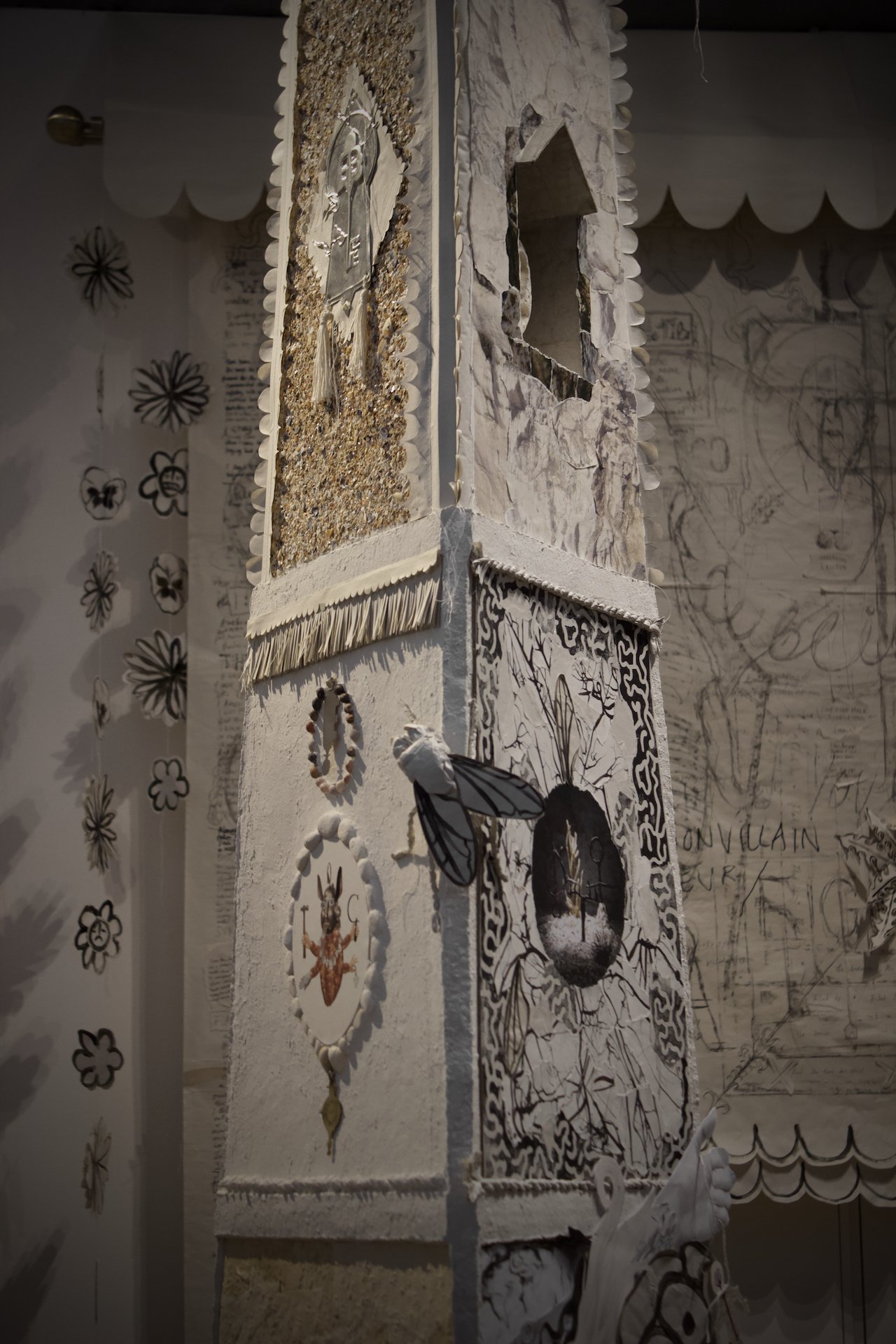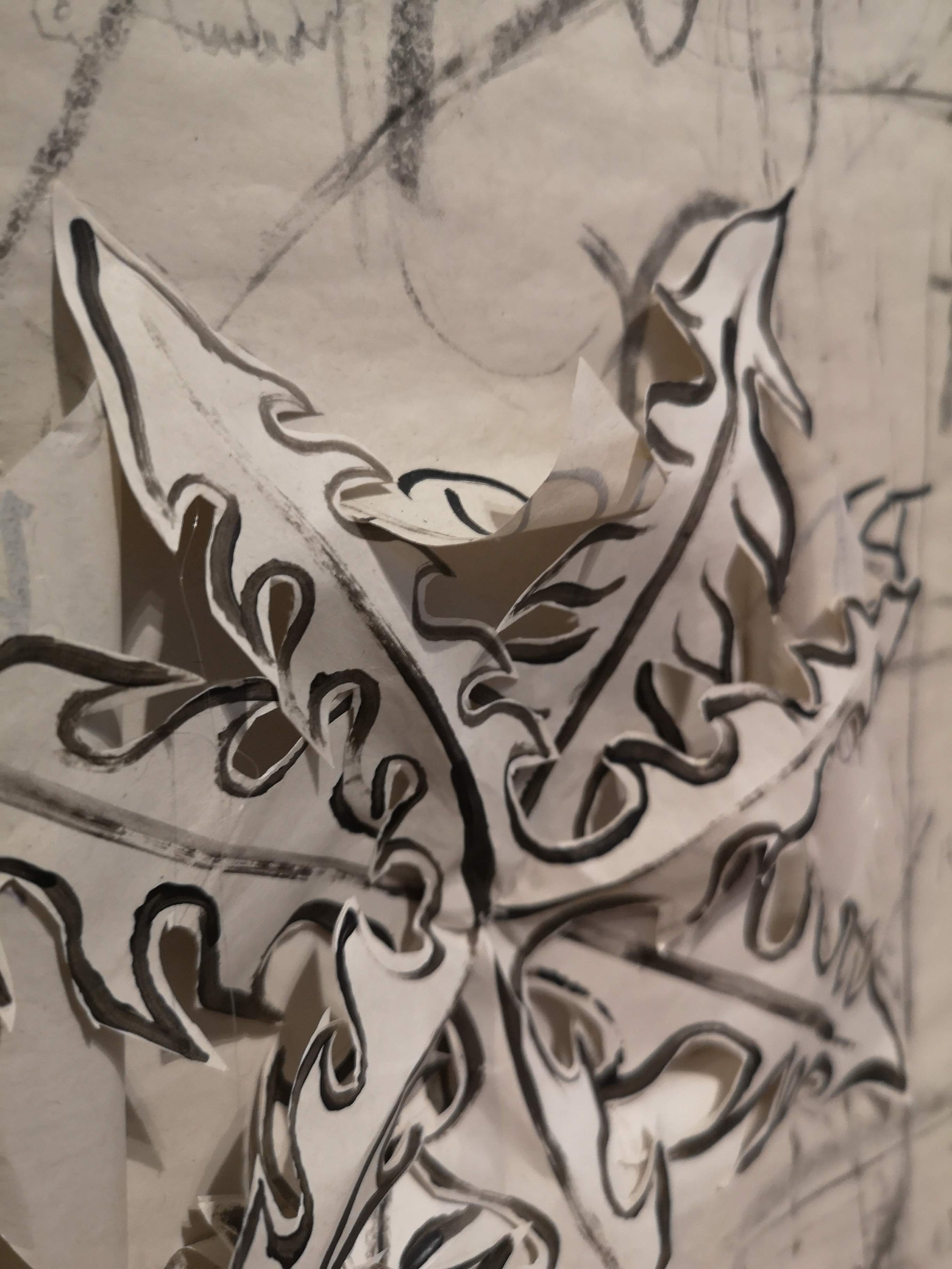Round the back of the House of Bill Bones is a yard - The Garden of Bill Bones. It is a moonlit sea garden and a memorial space, saturated in bed culture. Made predominantly of chip shop paper, builder’s caulk and cotton thread, the Garden plays with ideas of edifice, artifice and preciousness. This is the landing place, calm and alone; this is the place where Bill Bones throws stones.
The Garden contains a wall hanging, The Curse of Old Arthur, a holy textile and shrine to Billie’s five and a half year tenancy in a flat in Cliftonville. Freestanding, is The Obelisk of Bill Bones - a monument to the growth of the new, protean alter ego of Bill Bones and emanating from it is L'Éden existe, c'est une île, a soundscape of found and fabricated sound. Dotted around is a menagerie of peeping, transforming, flying signifiers of the stories held within the installation, entangled and influencing one another. And, of course, there is a memorial bench; there should always be somewhere to sit.
The Curse of Old Arthur
The Garden is a paean to chip paper. Used throughout the works in the installation, as canvas, as paper maché substrate and as decorative ropes, frills and tassels. Cheap, temporary, ubiquitous, democratic. It yellows and becomes brittle with exposure to light and the atmosphere, yet before it transitions, it has a beautiful feathery quality. It has the perfect natural colour, like bone, with little composite flecks and fibres. It is the archetypal seaside material; deprivation, austerity, nostalgia, the artifice and authenticity of the British seaside. It speaks of sustenance, disposability, historicity; it is redolent of the memory of the smell of fat and the sound of gulls. It’s smooth and silky, and when sewn together in several layers, it becomes sturdy and luxurious, like fish scales and mycelium and all the things in the organic world that are delicate and humble and strong. Crafting this material with care is an act of protest, of sensitivity, of empathy and of futility. It is spun together with the silicone caulk of The Landlord’s Contractor.
The Garden is a continuation from installation The Bed of Bill Bones and thesis The House of Bill Bones. The works surrounding Bill Bones are concerned with developing processes informed by notions of dwelling. Fortified by Tim Ingold’s writings on the dwelling perspective, they pursue a use of Autoethnography and embodiment that is accessible, gradual and metamorphological. Both the Bed and the Garden were made through periods of sustained incapacity and confinement to my one bedroom flat in Cliftonville, Margate. They are, as such, symbiotically infused with the environmental factors associated with that space.
“The first God had, in his garden,
From the back, looked like a household pet.
When it twirled round was revealed to be
A three-legged, black-grey hog
See what flows from his mushy pen…
Garden,
Garden.”
Mark E Smith

























